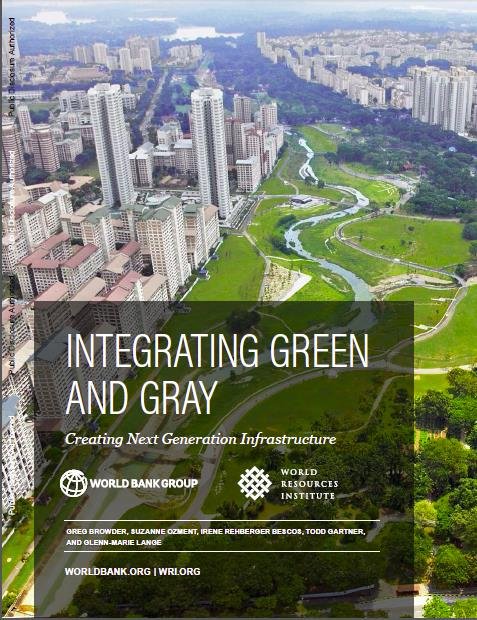- Share this article
- Subscribe to our newsletter
Integrating Green and Gray
Green and gray infrastructure are more powerful when they work together, according to the report
Integrating Green and Gray: Creating Next Generation Infrastructure published in March 2019 by the World Bank and World Resources Institute.
A new generation of infrastructure projects that harness the power of nature can help achieve development goals, including water security and climate resilience, according to the authors. They are calling for green infrastructure, such as mangroves and wetlands, to play a bigger role in traditional infrastructure planning.
The authors show how weaving the power of ‘green’ natural systems, including flood plains and forests, into ‘gray’ traditional infrastructure systems can lower cost and increase resilience.
The report showcases World Bank projects where green infrastructure is already being deployed. For example, in Brazil, forests filter biological impurities to protect water sources and reduce the need for expensive water treatment plants upgrades. In Vietnam, mangroves are used as a first line of defense against typhoons and sea surges, helping to reduce investments in expensive man-made sea dikes. And in Somalia, natural river sediments are trapped behind dams, helping to recharge local aquifers, thus eliminating the need for deep and expensive groundwater pumps.
The report illustrates how emerging technology such as earth-based observations and advanced modelling make it cheaper and easier to design and assess the performance of green infrastructure. It also lays out a new framework for practitioners and service providers to integrate green infrastructure into gray, including technical, environmental, social, and economic dimensions.
The financing demands for global infrastructure are large and growing. Because of its environmental and social benefits, green infrastructure opens new finance opportunities both from public sources via grants and subsidies, or from private sources, such as mission-driven investors that can help tackle this financing gap. Unlocking these new sources of capital, both public and private, can help meet the significant infrastructure investment needs - equivalent to 4.5 per cent of GDP in developing countries - over the next 15 years.
(World Bank/ile)
More information and download the report Integrating Green and Gray: Creating Next Generation Infrastructure:
https://openknowledge.worldbank.org/handle/10986/31430





Add a comment
Be the First to Comment